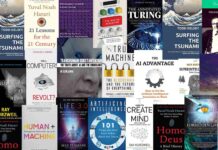Manufacturing isn’t what it used to be. Gone are the days when manual labor and simple machines ruled the production lines. In 2025, we’re seeing an exciting tech-driven revolution — one that’s changing everything from how factories operate to how products are designed, tested, and delivered.
Whether you’re an industry insider or just curious about the future of making things, here are the eight key technologies shaking up manufacturing right now.
1. Artificial Intelligence (AI) & Machine Learning
AI isn’t just for chatbots and self-driving cars. In manufacturing, it’s a total game-changer. AI systems now monitor entire production lines, predict equipment failures before they happen, and optimize every step of the process in real time.
Machine learning algorithms analyze data from sensors, cameras, and IoT devices to boost efficiency, reduce waste, and even fine-tune quality control. Predictive maintenance is a huge deal — fewer breakdowns mean less downtime and lower costs.
Use case: Automotive manufacturers using AI to detect tiny defects during assembly — before they become expensive recalls.
2. Industrial Internet of Things (IIoT)
The IIoT connects machines, devices, and systems throughout a factory to create a super-connected ecosystem. Think smart sensors, automated tracking systems, and cloud-connected control panels.
With real-time data flowing across production floors, managers gain unprecedented visibility into performance, inventory, and productivity. It also opens the door to remote diagnostics and faster troubleshooting.
Other benefits include:
- sensor-based IIoT deployment to improve connectivity
- support for data-driven decision-making for efficient performance management
- scope for automating low-value rule-based tasks that generally slow down production cycles.
- sensors receive and transmit operational information in real-time to help managers in sighting deviations instantly and prepare plans to prevent downtimes.
Use case: A food processing plant monitoring temperature and humidity across facilities to maintain consistent product quality.
3. Advanced Robotics
Robots in 2025 are smarter, safer, and more flexible than ever. Collaborative robots (cobots) work side-by-side with humans, handling repetitive or dangerous tasks without needing safety cages.
They’re perfect for small-batch or customized production, adapting quickly to new instructions or product types. Robotic arms now come equipped with AI-powered vision and precision handling.
Use case: Electronics manufacturers using cobots for intricate assembly tasks that require both accuracy and adaptability.
4. 3D Printing (Additive Manufacturing)
Additive manufacturing has matured into a full-blown production tool. It’s no longer just for prototyping — companies are now printing everything from airplane parts to medical implants at scale.
3D printing speeds up the design cycle, reduces material waste, and allows for hyper-customized products. In 2025, we’re even seeing the use of recycled materials and sustainable filaments.
Use case: Aerospace companies producing lighter components with complex geometries that traditional machining can’t handle.
5. Digital Twins
A digital twin is a virtual replica of a real-world system or product. It can simulate performance, test upgrades, or even forecast future issues — all without interrupting the physical version.
Manufacturers use digital twins to model entire production lines, reducing errors and boosting efficiency before changes are made. It’s also a great way to train staff or run ‘what if’ scenarios.
Use case: Factory managers testing new production workflows digitally before implementing them physically — saving time and money.
6. Augmented Reality (AR) & Virtual Reality (VR)
AR and VR are adding a new dimension to manufacturing. AR helps technicians visualize data and instructions overlaid on real equipment. VR creates immersive training environments, perfect for onboarding or practicing complex procedures.
These tools improve accuracy, cut training costs, and enhance safety — especially in environments where mistakes can be costly or dangerous.
Use case: Maintenance crews using AR glasses to get step-by-step repair guidance while working on machines.
7. Cloud Computing & Edge Computing
Cloud computing gives manufacturers access to scalable processing power and storage, ideal for analyzing big data and running advanced applications. Meanwhile, edge computing processes data close to where it’s generated — making real-time decisions lightning-fast.
Together, they support smart manufacturing by enabling fast, secure, and flexible operations.
Use case: A factory running AI-powered analytics in the cloud while using edge devices for real-time machine control.
8. Sustainable Manufacturing Technologies
Sustainability is no longer optional. Manufacturers in 2025 are leveraging technology to reduce environmental impact — from energy-efficient machines to closed-loop recycling systems.
Carbon tracking, digital sustainability reporting, and green energy integrations are becoming standard features. Tech is helping industries go greener without sacrificing productivity.
Use case: Consumer goods factories using solar-powered robotics and recycled packaging materials.
The Bottom Line
These eight technologies aren’t just buzzwords — they’re actively shaping the future of manufacturing. Companies that embrace them are gaining speed, flexibility, and resilience in a fast-changing global market.
Want to stay ahead in 2025 and beyond? It’s time to get familiar with these tools and trends — because the future of manufacturing is already here.
TechnologyHQ is a platform about business insights, tech, 4IR, digital transformation, AI, Blockchain, Cybersecurity, and social media for businesses.
We manage social media groups with more than 200,000 members with almost 100% engagement.







































